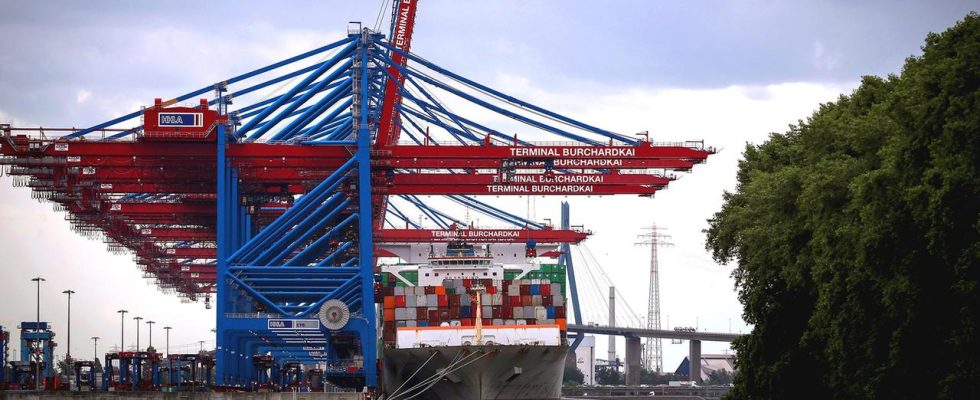Weak trade with China and the sluggish economy in Germany have caused container handling in the Port of Hamburg to shrink. In other German ports, the decline was even more pronounced.
Container handling in the Port of Hamburg fell significantly in the first half of the year compared to the same period last year. Port of Hamburg Marketing announced today that a total of 3.8 million standard containers (TEU) went over the quayside from January to June. That is a minus of 11.7 percent. General cargo throughput fell by 11.1 percent to 39.2 million tons.
Overall, seaborne cargo handling in Hamburg fell by 5.8 percent to 58.2 million tons in the first half of the year compared to the same period of the previous year. As a result, container handling in Germany’s largest port fell more sharply than in the leading North Sea ports of Rotterdam and Antwerp. The ports of Bremen and Bremerhaven even handled a good 15 percent fewer containers.
No forecast for the full year
Above all, handling with China – by far the most important trading partner – has collapsed. There, the port recorded a decline of 18.8 percent to 1.1 million TEU. “That definitely worries us,” said Port of Hamburg Marketing Director Axel Mattern. However, the port itself has little influence. Mattern cited lower demand, the consequences of Corona and the political situation in China as reasons for the decline.
The slump in container handling with Russia is also noticeable, said Mattern. Before the beginning of the Russian war of aggression in Ukraine, Russia was still the number four trading partner with a container count of 79,000 TEU in the first half of last year. In the first six months of 2023, the number of containers fell to zero.
The Port of Hamburg Marketing association still does not want to make a forecast for 2023. The challenging economic and geopolitical conditions did not allow for concrete forecasts. “We assume that at least the slightly positive trend of the second quarter will continue,” explained Board Member Mattern.

